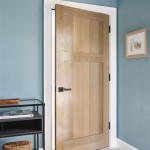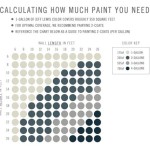The Best Paint for Interior Walls: A Comprehensive Guide
Choosing the right paint for your interior walls is an important decision that can significantly impact the look and feel of your home. With a vast array of options available, navigating the paint aisle can be overwhelming. This comprehensive guide will explore key factors to consider when selecting interior wall paint and highlight different types of paint suitable for various needs.
Understanding Paint Types and Finishes
Paint is generally classified into two main categories: latex and oil-based. Latex paints, widely preferred for interior walls, are water-based and offer numerous benefits, including:
- Easy Application: Latex paint dries quickly and cleans up easily with soap and water.
- Low Odor: Compared to oil-based paints, latex paints emit less odor during application and drying.
- Durability: Modern latex paints offer excellent durability and resistance to stains and fading.
Oil-based paints, while less common for interior walls, offer superior durability and a smoother, more uniform finish. However, they require mineral spirits for cleanup and emit stronger odors.
Beyond paint type, understanding paint finishes is crucial. Finishes determine the sheen and texture of the paint once applied. Common finishes include:
- Flat: Providing a matte finish, flat paint hides imperfections well, making it ideal for low-traffic areas. However, it is less washable and prone to showing stains.
- Eggshell: With a slightly sheen, eggshell paint offers a soft, subtle look while being more washable than flat paint.
- Satin: Providing a smooth, velvety finish, satin paint is durable and washable, making it suitable for high-traffic areas like hallways and kitchens.
- Semi-Gloss: Offering a more reflective surface, semi-gloss paint is highly durable and washable, making it suitable for trim, doors, and bathrooms.
- Gloss: The most reflective finish, gloss paint offers exceptional durability and washability, making it suitable for high-moisture environments like bathrooms and kitchens.
Factors to Consider When Choosing Interior Wall Paint
When selecting the best paint for your interior walls, consider the following factors:
1. Room Usage and Traffic
High-traffic areas like hallways, kitchens, and bathrooms require durable paints with enhanced washability. Low-traffic areas like bedrooms and living rooms might benefit from a softer, more forgiving finish.
2. Lighting Conditions
The amount of natural light in a room can affect how colors appear. Consider the lighting conditions when selecting paint colors. For rooms with limited natural light, lighter paint hues can create a brighter, more spacious feel. Conversely, darker hues can add warmth and coziness to well-lit rooms.
3. Personal Preferences
Ultimately, the best paint for your interior walls is the one that aligns with your personal preferences. Consider the overall aesthetic you are aiming for, whether it is minimalist, contemporary, traditional, or eclectic. Experiment with paint samples before committing to a final decision.
4. Environmental Considerations
Many paint manufacturers offer environmentally friendly options with low VOCs (volatile organic compounds). These paints are less harmful to indoor air quality and can be a good choice for homes with sensitive occupants.
5. Budget
Paint prices vary widely based on brand, type, and finish. Consider your budget when making your selection. While premium brands might offer superior quality and performance, there are also affordable options available that deliver excellent results.
Tips for a Smooth and Successful Paint Job
To ensure a smooth and successful paint job, follow these tips:
- Prepare the Surface: Thoroughly clean and repair any imperfections on the walls before painting.
- Use a Primer: Apply a primer to ensure proper adhesion and prevent stains from bleeding through the paint.
- Use the Right Tools: Invest in high-quality brushes, rollers, and paint trays for a professional finish.
- Apply Thin Coats: Apply thin, even coats of paint for optimal coverage and to minimize brushstrokes.
- Allow Adequate Drying Time: Allow each coat of paint to dry completely before applying the next.
By considering these factors and following these tips, you can choose the best paint for your interior walls and achieve a stunning finish that enhances the beauty and functionality of your home.

A Guide To Choose The Best Paint For Interior Walls Berger Blog

Know Which Is The Best Type Of Paint For Interior Walls Berger Blog

A Guide To Choose The Best Paint For Interior Walls Berger Blog

2024 Popular Paint Colors For Your Home

A Comprehensive Guide To The Best Neutral Paint Colours Girl About House

Types Of Paints For Home Their Uses And Livspace

20 Best Paint Colors Interior Designers Favorite Wall

Which Type Of Paint Is Best For Interior Walls Berger Blog

Types Of Paint A Guide To Finishes And Surfaces

Types Of Paints For Home Their Uses And Livspace
Related Posts








